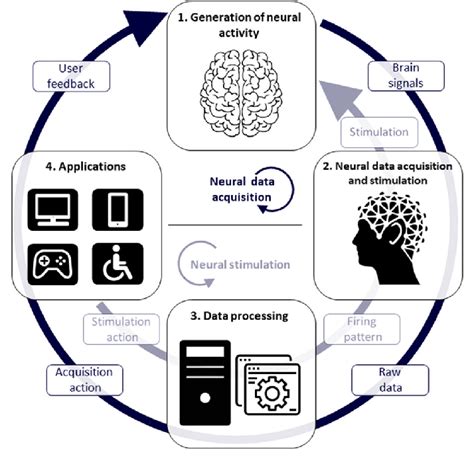lv bci The goal of the trial was to evaluate percutaneous coronary intervention (PCI) plus optimal medical therapy compared with optimal medical therapy alone among individuals with left ventricular ejection fraction (LVEF) ≤35% and extensive coronary . $10K+
0 · versalam sizes
1 · versa lam beam span chart
2 · lvl specifiers guide
3 · lvl hole chart
4 · boise lvl span chart
5 · boise cascade lvl span chart
6 · 24 ft lvl beam price
7 · 18 lvl weight per foot
34 mm. 40 mm. Dial: Black. Dial: Silver. Dial: Blue. 1990's. 2000's. 2010's. 14000. 116900. 5500. Screw-Down Crown. Central seconds. Chronometer. Business watches. Sapphire .
lv bci*******Whether revascularization by percutaneous coronary intervention (PCI) can improve event-free survival and left ventricular function in patients with severe ischemic left ventricular systolic . See moreWe randomly assigned patients with a left ventricular ejection fraction of 35% or less, extensive coronary artery disease amenable to PCI, and demonstrable myocardial viability to a strategy . See moreA total of 700 patients underwent randomization — 347 were assigned to the PCI group and 353 to the optimal-medical-therapy group. Over a median of 41 months, a primary-outcome event occurred in 129 patients (37.2%) in the PCI group and in 134 patients (38.0%) in the optimal-medical-therapy group (hazard ratio, 0.99; 95% confidence . See more
The goal of the trial was to evaluate percutaneous coronary intervention (PCI) plus optimal medical therapy compared with optimal medical therapy alone among individuals with left ventricular ejection fraction (LVEF) ≤35% and extensive coronary .
Blunt cardiac injury (BCI) refers to injury sustained due to blunt trauma to the heart. The manifestations of such range from clinically silent, transient arrhythmias to deadly cardiac wall rupture. The absence of a clear definition and gold standard for laboratory testing .
REVIVED-BCIS2 was a prospective, multicenter UK trial, which randomized patients with severe ischemic left ventricular systolic dysfunction to either PCI+OMT or OMT alone.

Whether revascularization by percutaneous coronary intervention (PCI) can improve event-free survival and left ventricular function in patients with severe ischemic left ventricular systolic.
The goal of the trial was to evaluate percutaneous coronary intervention (PCI) plus optimal medical therapy compared with optimal medical therapy alone among individuals with left ventricular ejection fraction (LVEF) ≤35% and extensive coronary artery disease (CAD).Blunt cardiac injury (BCI) refers to injury sustained due to blunt trauma to the heart. The manifestations of such range from clinically silent, transient arrhythmias to deadly cardiac wall rupture. The absence of a clear definition and gold standard for laboratory testing make the diagnosis of blunt cardiac injury difficult.

REVIVED-BCIS2 was a prospective, multicenter UK trial, which randomized patients with severe ischemic left ventricular systolic dysfunction to either PCI+OMT or OMT alone. Blunt cardiac injury (BCI) encompasses a spectrum of conditions resulting from blunt chest trauma, ranging from minor myocardial bruising to severe, life-threatening cardiac rupture. While a minority of patients exhibit abnormal electrocardiogram (ECG) results or signs of shock, most present with no symptoms initially. Reg: LV-BCI photos; Aircraft: Piper PA-31-350 Navajo Chieftain; Serial #: 31-7952023; Photo date: 2009-06-12; Uploaded: 2009-06-19Logistic regression models were also created to explore the association between viability characteristics and improvement in left ventricular function, defined dichotomously by the median change in left ventricular ejection fraction adjusting for baseline variables. The REVIVED-BCIS2 trial randomized 700 patients with extensive coronary artery disease and left ventricular (LV) ejection fraction (LVEF) ≤ 35% and viability in more than four dysfunctional myocardial segments to percutaneous coronary intervention (PCI) plus OMT versus OMT alone.
Blunt cardiac injury (BCI) is a potentially lethal entity as a result of trauma to the chest. Due to its indistinct clinical presentation and heterogeneous definition, BCI might be missed during the initial survey of trauma patients in the acute care setting.
lv bci BCI can lead to myocardial infarction if patients are misdiagnosed and treatment is delayed. Thus, surgeons and physicians should consider cardiac complications in patients with chest trauma to reduce the incidence of its misdiagnosis.
Whether revascularization by percutaneous coronary intervention (PCI) can improve event-free survival and left ventricular function in patients with severe ischemic left ventricular systolic.
The goal of the trial was to evaluate percutaneous coronary intervention (PCI) plus optimal medical therapy compared with optimal medical therapy alone among individuals with left ventricular ejection fraction (LVEF) ≤35% and extensive coronary artery disease (CAD).Blunt cardiac injury (BCI) refers to injury sustained due to blunt trauma to the heart. The manifestations of such range from clinically silent, transient arrhythmias to deadly cardiac wall rupture. The absence of a clear definition and gold standard for laboratory testing make the diagnosis of blunt cardiac injury difficult.
REVIVED-BCIS2 was a prospective, multicenter UK trial, which randomized patients with severe ischemic left ventricular systolic dysfunction to either PCI+OMT or OMT alone.
Blunt cardiac injury (BCI) encompasses a spectrum of conditions resulting from blunt chest trauma, ranging from minor myocardial bruising to severe, life-threatening cardiac rupture. While a minority of patients exhibit abnormal electrocardiogram (ECG) results or signs of shock, most present with no symptoms initially.
Reg: LV-BCI photos; Aircraft: Piper PA-31-350 Navajo Chieftain; Serial #: 31-7952023; Photo date: 2009-06-12; Uploaded: 2009-06-19Logistic regression models were also created to explore the association between viability characteristics and improvement in left ventricular function, defined dichotomously by the median change in left ventricular ejection fraction adjusting for baseline variables.
The REVIVED-BCIS2 trial randomized 700 patients with extensive coronary artery disease and left ventricular (LV) ejection fraction (LVEF) ≤ 35% and viability in more than four dysfunctional myocardial segments to percutaneous coronary intervention (PCI) plus OMT versus OMT alone.
Year: 1974; Ref.: 6263; Material: Stainless Steel; Size: 37.50mm; Movement: Manual Wind Rolex chronograph 727; Waterproof: 60m; Box: Watch Club Box; Papers: Two Year .
lv bci|versa lam beam span chart
























